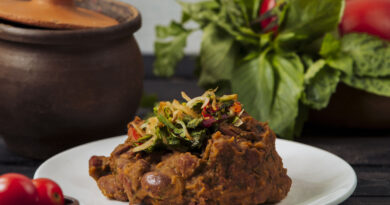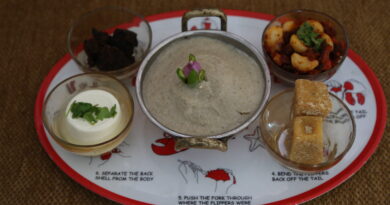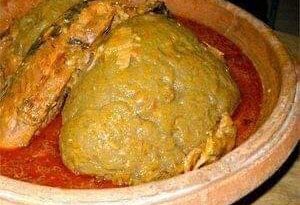Seswaa
Unveiling the Delicious Mystique of Seswaa: Botswana’s Iconic Culinary Gem
Introduction: In the vast tapestry of global cuisines, certain dishes stand out not just for their flavor but for the rich cultural heritage they embody. One such culinary delight is Seswaa, a traditional Botswanan dish that encapsulates the essence of the nation’s culinary heritage. With its simple yet profound flavors and deep-rooted cultural significance, Seswaa holds a special place in the hearts and palates of Botswanans and food enthusiasts worldwide.
Origins and History: Seswaa traces its origins back to the Batswana people, who are the largest ethnic group in Botswana. Historically, Seswaa was a dish reserved for special occasions, such as weddings, festivals, and gatherings of significance. It was prepared using a slow-cooking method, typically involving boiling or steaming, which allowed the meat to become tender and infused with flavor.
Ingredients and Preparation: At its core, Seswaa is a simple dish, relying on just a few key ingredients: meat, typically beef or goat; salt; and water. The meat, usually tougher cuts like the shoulder or shank, is simmered in water with salt until it is fall-apart tender. This slow-cooking process is essential for achieving the desired texture and flavor profile of Seswaa.
Traditionally, Seswaa was prepared in large iron pots over an open fire, allowing the meat to slowly stew and develop its rich flavor. As the meat cooks, it is pounded and shredded, resulting in a fine, velvety texture that is both comforting and satisfying.
Cultural Significance: Beyond its culinary appeal, Seswaa holds immense cultural significance for the people of Botswana. It is often served at important communal gatherings, where it serves as a symbol of unity and togetherness. The act of preparing Seswaa is itself a communal affair, with family members and friends coming together to participate in the cooking process.
Moreover, Seswaa is deeply ingrained in the cultural identity of Botswana, reflecting the values of simplicity, resilience, and hospitality that are characteristic of Batswana culture. It is a dish that transcends social and economic boundaries, bringing people together across generations and backgrounds.
Variations and Accompaniments: While the basic recipe for Seswaa remains consistent, there are regional variations and personal preferences that influence its preparation. Some cooks may add aromatics like onions, garlic, and spices to enhance the flavor, while others prefer to let the natural taste of the meat shine through. Additionally, Seswaa is often served with traditional accompaniments such as pap (maize porridge) or morogo (wild spinach), which complement its rich, savory flavor.
Modern Interpretations: In recent years, Seswaa has experienced a resurgence in popularity, both within Botswana and on the global stage. Chefs and food enthusiasts have begun to experiment with modern twists on the traditional dish, incorporating new ingredients and cooking techniques to create innovative interpretations of Seswaa.
Furthermore, the rise of food tourism has sparked interest in Botswana’s culinary heritage, with visitors eager to sample authentic dishes like Seswaa during their travels. This has led to a renewed appreciation for traditional cooking methods and ingredients, preserving the legacy of dishes like Seswaa for future generations to enjoy.
Conclusion: In conclusion, Seswaa stands as a testament to the enduring power of food to unite, inspire, and celebrate cultural heritage. From its humble origins as a staple of Batswana cuisine to its status as a beloved culinary icon, Seswaa continues to captivate the hearts and palates of people around the world. As we savor each tender bite of this flavorful dish, we are reminded of the rich tapestry of traditions, flavors, and stories that make up the culinary landscape of Botswana.



